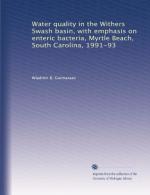|
This section contains 161 words (approx. 1 page at 300 words per page) |
Enteric bacteria are defined as bacteria which reside in the intestines of animals. Members of the Enterobacteriaceae family, enteric bacteria are important because some of them symbiotically aid the digestion of their hosts, while other pathogenic species cause disease or death in their host organism. The pathogenic members of this family include species from the genera Escherichia, Salmonella, Shigella, Klebsiella, and Yersinia. All of these pathogens are closely associated with fecal contamination of foods and water. In North America, the reported incidence of salmonellosis outweighs the occurrence of all of the other reportable diseases by other enteric bacteria combined.
Most infections from enteric pathogens require large numbers of organisms to be ingested by immunocompetent adults, with the exception of Shigella. Symptoms include gastrointestinal distress and diarrhea. The enteric bacteria related to Escherichia coli are known as the coliform bacteria. Coliform bacteria are used as indicators of pathogenic enteric bacteria in drinking and recreational waters.
See Also
|
This section contains 161 words (approx. 1 page at 300 words per page) |


